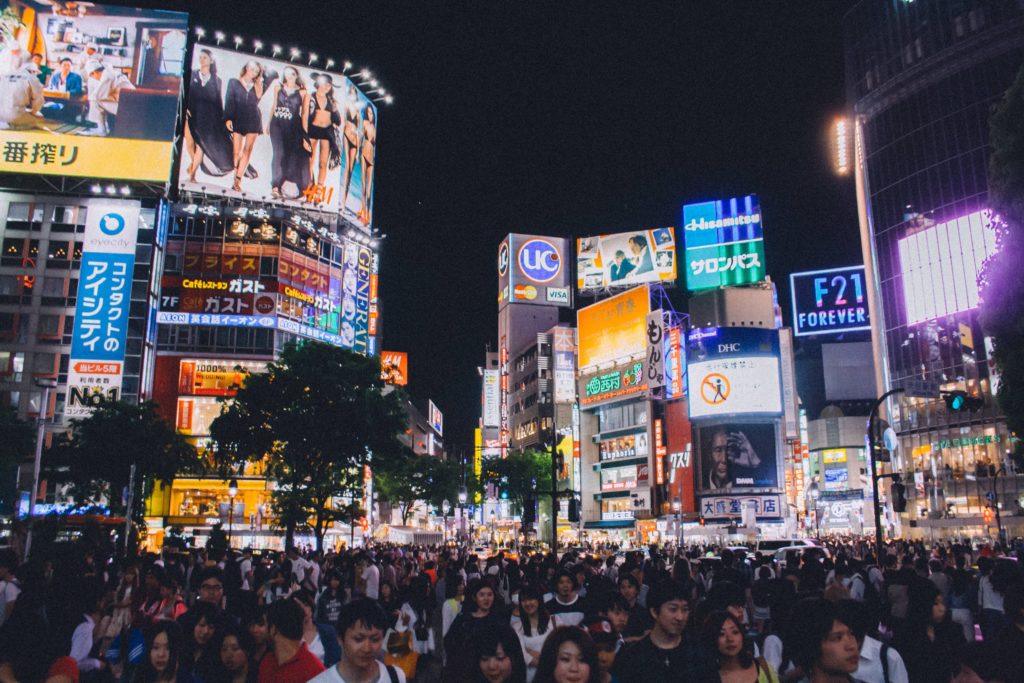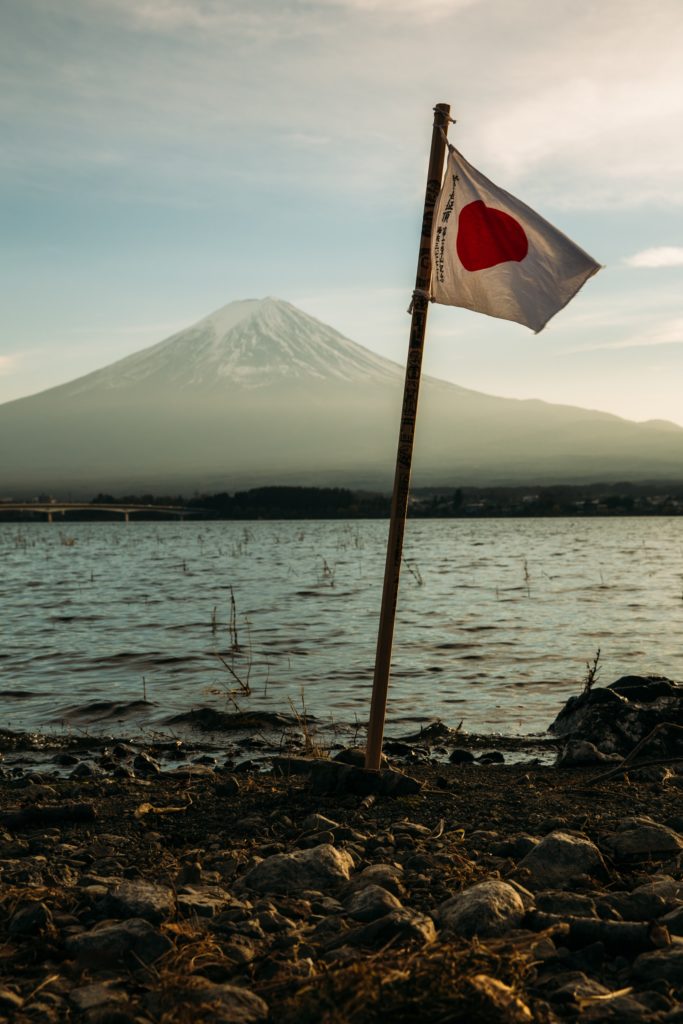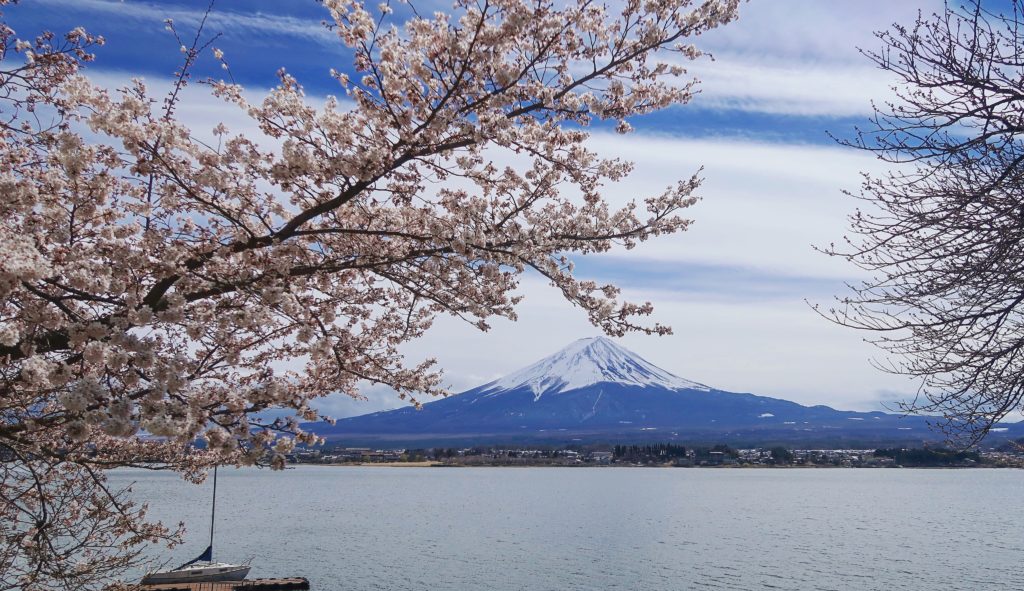
外国人の友達が日本に来る予定があって、色々案内したいんだ。
でも考えてみると、日本の文化とか歴史を英語で説明できないことに気がついたよ。
分かっているつもりだったんだけど、何でだろう。
いろんな場面で紹介できるようになりたいな。

英語で日本の文化や歴史を説明しようとすると、言葉が出てこなくなるのは非常によく分かります。
その時点で初めて、実は日本のことをあまりよく知らないという事実に気付くのかもしれませんね。
もしくは知識はあっても、上手く英語に置き換えられないかのどちらかです。

うーん、たしかに…。
今まで当たり前だと思っていたから深く考えたことはなくて、日本語でも説明が難しいのにさらにそれを英語にしなければいけないってなかなか大変だよね。

良いところに気がつきましたね。
普段はなかなか意識しないので実感が沸かないかもしれませんが、日本の文化は世界的にみてとても特殊で珍しいものです。
外国人と話すとよく、日本の文化や特徴の説明を求められます。
彼らからすると興味津々のことが多いのでしょうね。
そんなときには日本代表として、きちんとした説明をしたいものです。

そっかぁ、彼らからしたらぼくが日本代表だもんね。責任重大だなぁ。
上手く英語で説明できるか、自信がないよ。

拙い英語でも問題ありません。
彼らはリアルな実感を伴った意見を知りたいので、一生懸命伝えればきっと喜ばれるはずです。
今回はさまざまな日本文化について英語で説明する際の例文を紹介します。英語表現と一緒に、日本文化に対する知識を改めて見直してみましょう!
きっと「目からウロコ」の知識もあるはずですよ。
- 日本の文化や一般的な風習を英語で説明できるようになりたい
- 日本について知っているようで分かっていないことに気がついた
- 外国人をおもてなししたい
もくじ


まずは日本の一般的な情報や特色について、英語で説明できるようにしましょう。
ちなみに記事を書いている私ですが、世界55ヶ国を訪れた経験があり、通訳ガイドとして仕事したこともあります。
世界各地で受けた恩恵を日本で返したいという思いで、日本についての知識を深めて参りました。
例文を参考にアレンジしながら、日本の特色を伝えて頂ければと思います。それではどうぞ!

Japan is called “Nippon” or “Nihon” in Japanese.
“Nippon” basically means “land of the rising sun”.
日本は日本語で「ニッポン」、または「にほん」と呼ばれています。
「ニッポン」はもともと「太陽が昇る国」という意味です。

The population of Japan is about one hundred and twenty six million, and almost 10% of them live in Tokyo.
日本の人口は約1億2600万人です。そのうち約10%が東京に住んでいます。

The special characteristics of the climate in Japan is clearly distinguished four seasons.
日本の気候の特色は四季がはっきりしていることです。
In the summer season, it’s high temperature and humidity.
And in the winter, it’s cold and dry.
夏は高温多湿、冬は寒くて乾燥しています。
Every year from summer into autumn, typhoon cause the Japan archipelago great storm and flood damages.
毎年夏から秋にかけて台風が上陸し、多くの風水害を日本列島にもたらします。

Japanese people humorously express the ranking of things to be feared in this world as “earthquakes, thunder, fires, fathers.”
世の中の恐ろしいものの順位を、日本人はユーモアを交えて「地震、雷、火事、おやじ」と表現します。
Earthquakes produce so much damage and occur so frequently in every region in Japan that they are ranked as the number one phenomenon to be feared.
地震は恐ろしい現象の第一に挙げられるほど被害が大きく、日本各地で頻繁に発生します。

The capital of Japan is Tokyo.
It used to be called Edo which is the source for the name of the Edo Period.
日本の首都は東京です。
昔は江戸とよばれ、江戸時代という名の由来となっています。
Today, it is an international city with a population of 14 million where tradition and high technology coexist.
現在では人口1400万人、伝統とハイテクの混在する国際都市となっています。

The Japanese anthem is “Kimi-ga-yo”.
“Kimi” refers to the Emperor, and the words contain the prayer, such as “May the Emperor’s reign last forever.”
日本の国歌は「君が代」です。
「君」とは天皇のことを指し、歌詞の内容は「天皇の治世がいつまでも続きますように」という願いが込められています。
Consequently, today when the original emperor system has been abolished, various objections have been raised about the people singing this song as national anthem.
そのため、天皇制が廃止された現代において、この歌を国民が国歌として歌うことに関してはさまざまな異論があります。

The Japanese national flag has a red circle on a white background.
The red circle is a symbol of the rising sun.
日本の国旗(日の丸)には白地に赤い丸が描かれています。
赤い丸は日の出の太陽を象徴しています。

Modern Japanese consists of three kinds of characters.
Such as Kanji which imported from China and the phonetic characters Hiragana and Katakana.
Commonly we use around 2,000 Kanjis.
現代の日本語は、3種類の文字から成り立っています。中国から取り入れた漢字と、表音文字であるひらがな・カタカナです。
常用漢字は約2,000文字です。

Mount Fuji is Japan’s highest mountain, known throughout the world for its beauty.
富士山は、その美しさゆえに広く世界に知られている日本一高い山です。
It is 3,776 meters high, located almost in the middle of Japan, and in the past erupted frequently.
標高は3,776メートル、日本のほぼ中心部に位置し、史上たびたび噴火してきました。
Since 1707 volcanic activity has ceased, but geologically it is a dormant volcano.
1707年以降は火山活動を休止していますが、地質学上は活火山です。

Japanese cuisine is also called Washoku, and it is listed as an Intangible Cultural Heritage by UNESCO.
日本料理は「和食」とも呼ばれ、ユネスコの無形文化遺産に登録されています
Generally, Japanese people say “ Itadaki-masu” when we eat, and “Gochiso-sama” when we finish to show appreciating to the food and the cook.
一般的に、日本人は食事や作ってくれた人への感謝を表すために、食べる前に「いただきます」、食後は「ごちそうさま」と言います。


ここからは、私が外国人によく質問を受けた日本特有の文化についてお伝えします。
私たちにとっての当たり前も、外国人にとっては驚きの対象となるものが多いですね。
ぜひそれぞれの文化の違いで盛り上がってください!
なお、例文として紹介している意見はあくまで私個人としての意見であり、絶対的な正解ではありません。
日本人は何の宗教を信仰しているの?

In Japan Shintoism and Buddhism exist together, and most of us believe in both of them.
日本には神道と仏教が共存しており、多くの人がその両方を信仰しています。
However, in contemporary Japan, both are becoming more like a deeply rooted custom practiced in daily life rather than expressions of faith.
しかし現代日本では、それらは信仰というよりも、 生活のなかに深く根を下ろした習慣という側面が強くなっています。
なんでそんなに自動販売機が多いの?

There are nearly 5 million vending machines in Japan.
日本には500万台近くの自動販売機があります。
The reasons why Japan has so many vending machine are their public peacefulness and high population density.
自動販売機が日本で多い理由には、治安の良さ・人口密度の高さなどが挙げられます。
Not only drinks, there are various kind of vending machines such as flowers, toys, underwear.
飲み物だけでなく花束やおもちゃ、下着など、様々な種類の自動販売機があります。
日本人はいつも着物を着ているの?

Kimono are generally worn for such occasions as special ceremonies and parties, while Western clothes are almost always worn for daily activities.
一般に、着物は特別な儀式やパーティーなどの際に着ることが多く、日常的にはほとんど洋服が着られます。
日本人はみんな布団で寝るの?

Although many Japanese people sleep in a bed recently, still many people sleep on a Futon.
近年はベッドで寝る人が多くなりましたが、布団で寝ている人も多いです。
Since Futon can be put in a closet when not being used, they are practical bedding for small Japanese rooms.
布団は、使わないときには畳んで押入れにしまっておけるので、日本の狭い部屋には合理的な寝具だからです。
なんでこんなに電車が時間どおりにくるの?

Generally, punctuality is considered very important in Japan.
一般的には、日本人にとっては時間を守ることは重要です。
Japanese people are drilled in the utmost importance of punctuality from a young age at school.
日本人は時間どおりに行動することの重要性を子供の時から教えられてきています。
Also, there are massive people depend on trains for commuting especially in urban areas.
さらに、都市部では特に多くの人が通勤に電車を頼っています。
They have developed the system for the accuracy of operations until now.
彼らは今日まで、運転システムの正確性を発展させてきました。
お寺と神社の違いはなに?

Temples are places where priests or nuns reside to practice ascetic exercises and hold Buddhist ceremonies and where Buddhist images are enshrined.
Shrines are buildings where Shinto deities are enshrined.
寺は、僧や尼が居住して修行や仏事などを行うところで、仏像が安置されています。神社は神道の神をまつった建物です。
Buddhism was born in India and came to Japan in the middle of the sixth century.
仏教はインドで生まれ、6世紀の半ばに日本へ伝わりました。
Shinto is the Japanese religion from ancient times, centering on the ideas of Japanese intimacy with nature and ancestor worship.
神道は日本古来の宗教であり、日本人の自然観と先祖崇拝の念がその中核をなしています。
日本人は裏表があるって本当?

『和』”Harmony” is one of the most important words for understanding the sprit of Japanese people.
日本人の精神性を理解するキーワードとして最も重要な単語のひとつが『和』です。
People had to live together in small communities peacefully and harmoniously, has worked a strong influence on human relationships.
狭い共同体のなかで、構成員同士が平和に仲良く暮らさなければならないという条件は、人間関係のあり方にも大きく影響を与えてきました。
For example, when expressing 『本音』(honest feelings) might hurt or offend others, 『建前』(official stance) is expressed instead to keep peace in a community.
たとえば、本音を言えば相手を傷つけたり怒らせたりするときは、建前を言うことで、共同体の平和を保つことができます。
Given those backgrounds, it may be one of the reason why there’s an impression that “Japanese people have duality“.
そういった背景が、「日本人は二面性がある」という印象を与える要因のひとつとなっているのかもしれません。
なにを考えているか分からない日本人が多いのはなぜ?

It’s the same reason as above, “honest feelings” and “official stances”.
上記の『本音と建前』同様の理由です。
This produced the custom of avoiding mention of honest feelings that is different from what everyone else has expressed and adjusting to official stance.
皆と違う本音は控えて、建前に順応するという習慣を生みました。
It provided the reason for criticizing the Japanese people for not readily expressing honest feelings because they value harmony more than self-expression.
自分の意見をなかなか言わないという日本人への批判を生む元ともなったようです。

英語で日本の文化を紹介する例文(テーマ別)18選を紹介してきました。
それぞれの説明では事実や意見のみだけでなく、
- 「なぜそうなったのか」という理由
- イメージしやすい具体例
も一緒に紹介できるとなお良いです。
そうすることによって相手の理解が深まり、信頼性や説得力を加えることができるからです。
自信を持って、しっかりと自分の国の文化を英語で紹介できれば、もっと日本に興味をもってくれるかもしれません。
それは日本人としてとても嬉しいことのはず。
ひとりひとりが日本代表、アンバサダーのような気持ちで日本文化を紹介していきましょう!

最後までお読みいただきありがとうございました!




